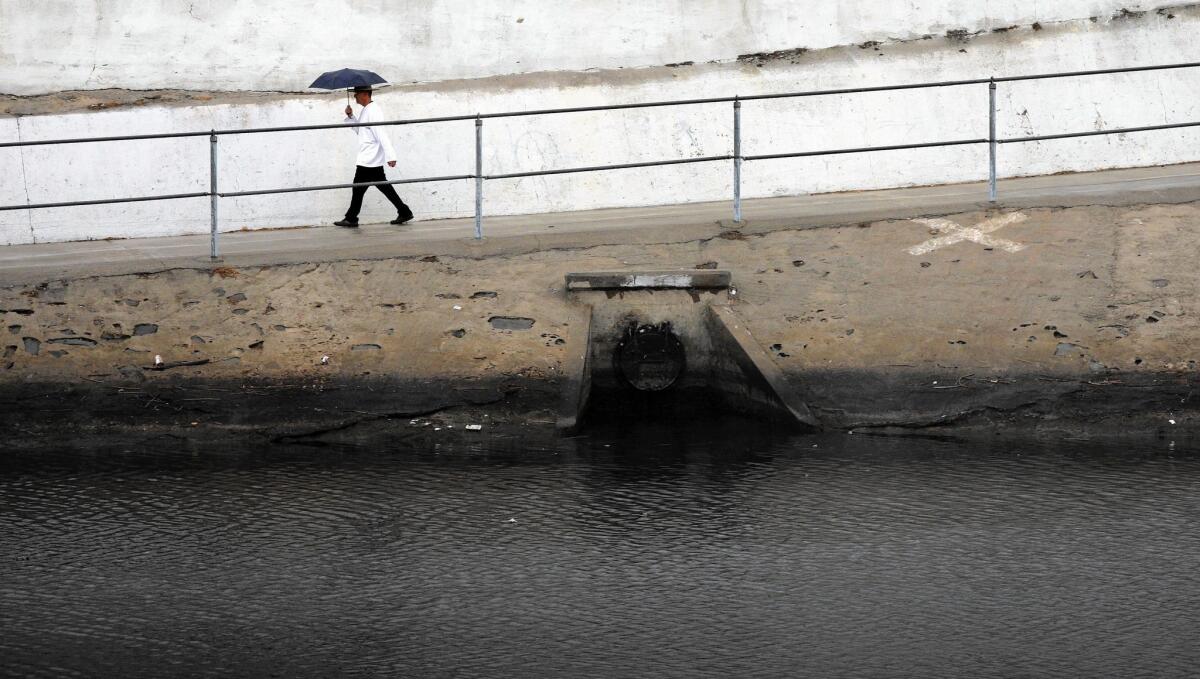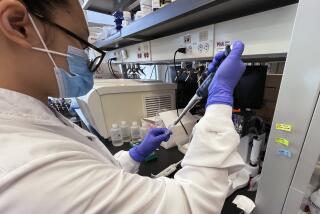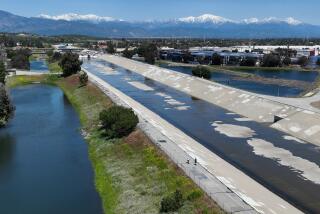Gray water and stormwater can help in the drought, but risk needs to be studied, researchers say

- Share via
As water utilities and their customers increasingly look to gray water and runoff from storms to supplement their supply amid drought, more guidelines and research are needed to ensure that the water is safe, researchers said in a report released Wednesday.
These sources “have substantial potential to contribute to local water supply needs,” according to the 326-page study, but “additional examination of risk is necessary” as use of stormwater and gray water becomes more widespread. (Gray water is untreated wastewater from washing machines, showers or bathroom sinks.)
“This is water you have now that you can take advantage of,” said Richard Luthy, a Stanford professor and one of the report’s authors. But, he added, “there’s the opportunity there for exposure to pathogens. And that’s something that needs to be studied more carefully.”
The more a city or town can diversify its water portfolio with storm runoff or gray water, the more easily it will be able to weather a serious drought, according to the study released by the National Academies of Sciences, Engineering and Medicine.
In June, the Los Angeles Department of Water and Power released a plan to boost stormwater capture by collecting rainfall in basins or washes in the San Fernando Valley, and then slowly feed it into the city’s primary aquifer.
In parts of the West such as Los Angeles, the study found, the timing and intensity of the rain limits how much stormwater can be captured by a household. In L.A., for example, water saved in rain barrels or even a storage tank would allow a household to cut its consumption of potable water by 5% or less, the study said.
But if a neighborhood or region chose to capture stormwater, treat it and store it in underground aquifers, the savings could be significant, the study said.
Gray water, on the other hand, is useful in dry regions because it provides a steady year-round water source. Simple gray water systems that move water from washing machines to the landscape can pay for themselves in as little as 21/2 years, the study said.
Such systems, while sometimes cumbersome to install, have gained popularity in recent years and been promoted by local officials in Los Angeles as a way to boost conservation.
But the study also raised questions about the quality of gray water and stormwater and their impact on human health.
Viruses or bacteria that could make humans sick are likely to occur in gray water, while stormwater may contain elevated levels of microorganisms, metals, organic chemical and sediments, the study said. Therefore both may require treatment in order to be used most beneficially.
Risk assessments performed by the authors suggested that gray water should be disinfected if it is used to irrigate lawns, crops or to flush toilets.
The authors called for “rigorous, risk-based guidelines” for gray water and stormwater.
“The wide variability in existing regulations and absence of federal guidance leaves stakeholders and local decision-makers uncertain about the safety of these practices,” the study said.
[email protected]
Twitter: @bymattstevens
More to Read
Sign up for Essential California
The most important California stories and recommendations in your inbox every morning.
You may occasionally receive promotional content from the Los Angeles Times.











